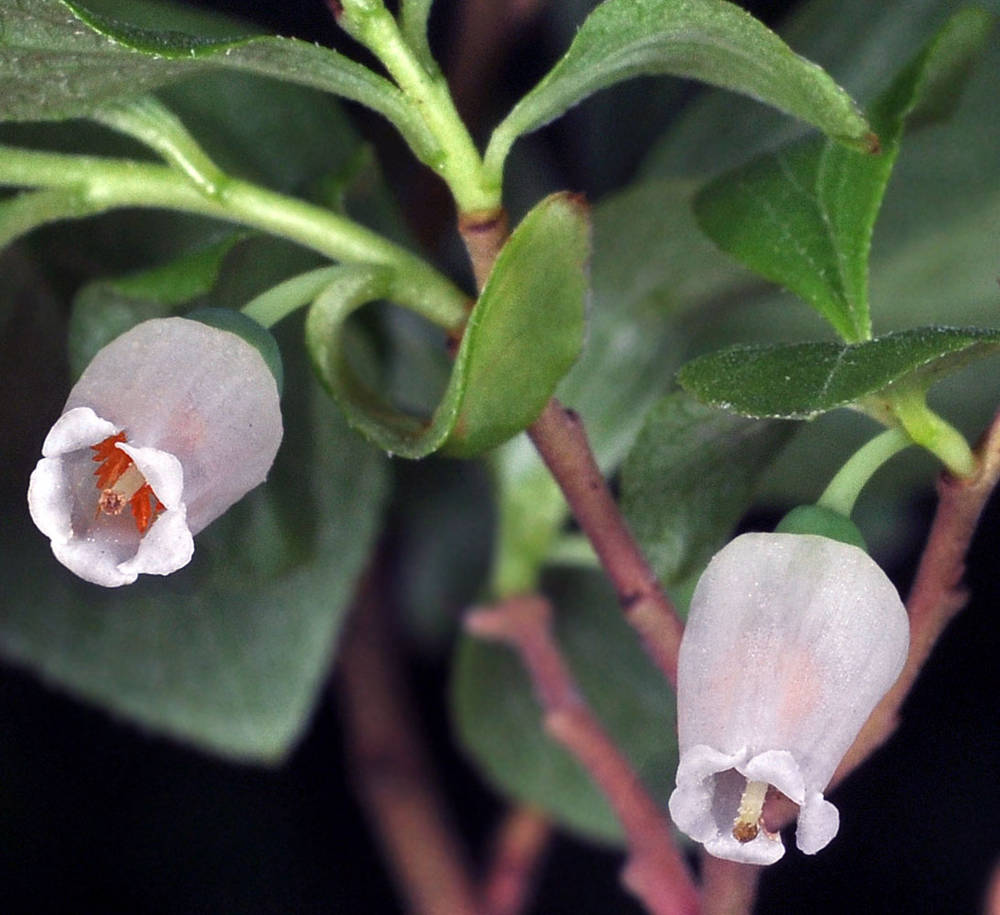Vaccinium cespitosum
Vaccinium caespitosum
dwarf bilberry
obovate to oblanceolate, 10–30 × 3–12 mm; thin; flexible, green abaxially;
margins serrate on distal 25–50%, prominently reticulate-veined;
tips rounded, sometimes subacute;
surfaces abaxially glabrous or glandular, adaxially glabrous.
solitary flowers in axils.
sepals 5, light green;
calyx lobes vestigial;
petals 5;
corollas cylindric-urceolate to globose, 4–6 × 3–5 mm, white to pink, glaucous;
filaments > anthers, glabrous.
5–8 mm in diameter, blue to bluish black, with a bloom.
=24.
Vaccinium cespitosum
Vaccinium caespitosum
Wet meadows to rocky mountain slopes. Flowering Apr–Aug. 50–2800 m. BR, BW, Casc, CR, ECas, Est, WV. CA, ID, WA; north to AK, east to Newfoundland, south to Guatemala. Native.
Morphologically, V. caespitosum is very similar to V. deliciosum, making identification of these species difficult, particularly at higher elevations where their ranges overlap. The chromosome numbers of V. caespitosum (2n=24) and V. deliciosum (2n=48) may indicate that V. deliciosum is an autopolyploid derivative of V. caespitosum.
Stephen Meyers
- Local floras:
BC,
CA,
OR,
WA
- Local Web sites:
CalFlora,
CalPhotos,
Flora NW,
PNW Herbaria
WildflowerSearch
iNaturalist (observations)
USDA Plants Database
- LBJ Wildflower Center
- SEINet
- Plants of the World Online
- Encyclopedia of Life
- Wikipedia
- Google Image Search
- Local floras:
BC,
CA,
OR,
WA
- Local Web sites:
CalFlora,
CalPhotos,
Flora NW,
PNW Herbaria
WildflowerSearch
iNaturalist (observations)
USDA Plants Database
- LBJ Wildflower Center
- SEINet
- Plants of the World Online
- Encyclopedia of Life
- Wikipedia
- Google Image Search



